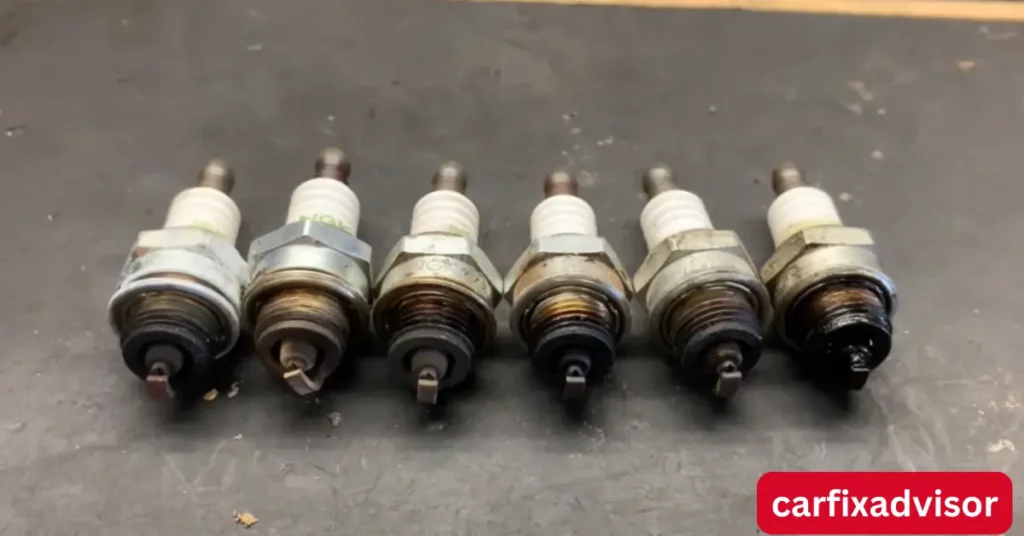If your jet ski isn’t performing like it used to, the culprit might be a simple yet essential part: the spark plug. A bad spark plug in a jet ski can lead to several noticeable issues—from rough idling to poor acceleration. In this guide, we’ll walk you through the most common jet ski bad spark plug symptoms, how to diagnose the issue, and what steps to take to fix it.
Why Spark Plugs Matter in a Jet Ski Engine
Spark plugs are critical to your jet ski’s ignition system. They ignite the air-fuel mixture inside the engine’s combustion chamber, powering the engine’s movement. When a spark plug goes bad—due to fouling, damage, or wear—it disrupts this process, leading to reduced performance and possible engine problems.

Common Symptoms of a Bad Spark Plug in a Jet Ski
Let’s explore the signs that may indicate a faulty or worn-out spark plug.
1. Difficulty Starting
One of the earliest signs of a bad spark plug is difficulty starting the jet ski. If it takes multiple attempts to fire up your machine—especially in cold conditions—this may be due to a weak or inconsistent spark.
2. Rough or Unsteady Idle
When idling, a jet ski should run smoothly. A bad spark plug may cause the engine to sputter, vibrate, or even shut off unexpectedly. This rough idle happens because combustion isn’t happening consistently across all cylinders.
3. Engine Misfires
If your jet ski jerks, hesitates, or sputters—particularly during acceleration—it may be misfiring. This occurs when one or more spark plugs fail to ignite the fuel-air mix properly, causing incomplete combustion.
4. Sluggish Acceleration
Is your jet ski slower to respond or not reaching top speed? Bad spark plugs may be the reason. Incomplete ignition results in reduced power output, affecting your ability to accelerate quickly.
5. Poor Fuel Economy
When the spark plug isn’t firing correctly, fuel may be wasted due to unburned fuel exiting the chamber. This leads to increased fuel consumption and reduced efficiency during rides.
6. Engine Knocking or Pinging Sounds
A knocking or pinging noise, especially when the engine is under load, can be a sign of pre-ignition or detonation—often caused by spark plug issues. This sound should never be ignored, as it can damage engine components over time.
7. Loss of Overall Power
If your jet ski feels underpowered or unresponsive, the engine may not be getting the spark it needs to perform optimally. A noticeable drop in power is often tied to misfiring spark plugs.
8. Check Engine Light Warning
Many modern jet skis have onboard diagnostic systems. A bad spark plug may trigger the check engine light if the ECU detects misfires or abnormal engine behavior.
How to Diagnose a Bad Spark Plug in Your Jet Ski
Think your spark plug might be the issue? Here’s how to confirm your suspicion.
Step 1: Visual Inspection of the Spark Plug
Remove the spark plug(s) and examine them closely. Signs of a bad plug include:
-
Black soot (carbon fouling)
-
White crusty deposits (ash fouling)
-
Oily residue (oil fouling)
-
Cracked porcelain or worn electrodes
Compare them to a spark plug condition chart to identify issues accurately.
Step 2: Examine Spark Plug Wires
Check that the wires are securely connected and not cracked or corroded. Faulty wiring can mimic the symptoms of a bad spark plug by disrupting the spark delivery.
Step 3: Eliminate Other Causes
While spark plugs are often the issue, don’t overlook other potential problems such as:
-
Clogged fuel filters
-
Faulty ignition coils
-
Bad fuel injectors
Always take a holistic approach when diagnosing jet ski engine issues.
What to Do If You Suspect a Bad Spark Plug
If your inspection confirms a bad spark plug, follow these steps:
-
Replace the Spark Plug: Use the spark plug type and gap specified in your owner’s manual.
-
Check All Cylinders: If one plug is fouled, inspect the others as well.
-
Consult a Mechanic: If you’re unsure about the diagnosis or repair process, seek help from a marine mechanic.
Preventing Spark Plug Problems in the Future
Want to avoid similar issues down the line? Follow these best practices:
-
Schedule Regular Maintenance: Replace spark plugs at intervals recommended by the manufacturer.
-
Use Quality Fuel: Low-quality or old fuel can lead to carbon build-up on plugs.
-
Store Your Jet Ski Properly: Moisture and corrosion during offseason storage can impact the ignition system.
-
Flush After Every Ride: Salt and grime buildup can damage electrical components if not rinsed properly.
FAQs on Jet Ski Bad Spark Plug Symptoms
Can I ride a jet ski with a bad spark plug?
You can, but it’s not recommended. It will reduce performance, waste fuel, and may damage the engine over time.
How often should jet ski spark plugs be changed?
Typically once a season or every 25–50 hours of use. Always check your owner’s manual for exact intervals.
Are bad spark plugs dangerous for the engine?
Yes, running the engine with misfires or improper combustion can cause overheating or long-term damage.
What does a fouled spark plug look like?
It may have black soot, white deposits, oil residue, or a visibly worn electrode.
Final Thoughts: Jet Ski Bad Spark Plug Symptoms
A bad spark plug may seem like a small issue, but it can significantly impact your jet ski’s performance and fuel economy. Recognizing symptoms early—like hard starts, misfires, or sluggish acceleration—can save you money and extend the life of your watercraft. Whether you’re a weekend warrior or a frequent rider, make spark plug checks a regular part of your jet ski maintenance routine.
